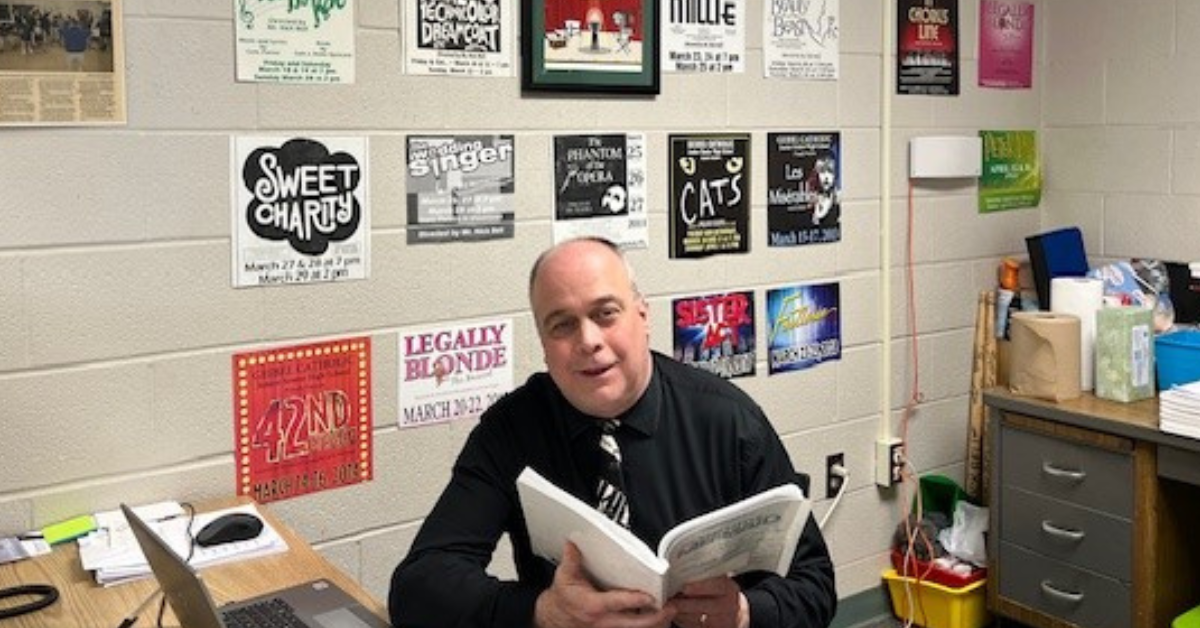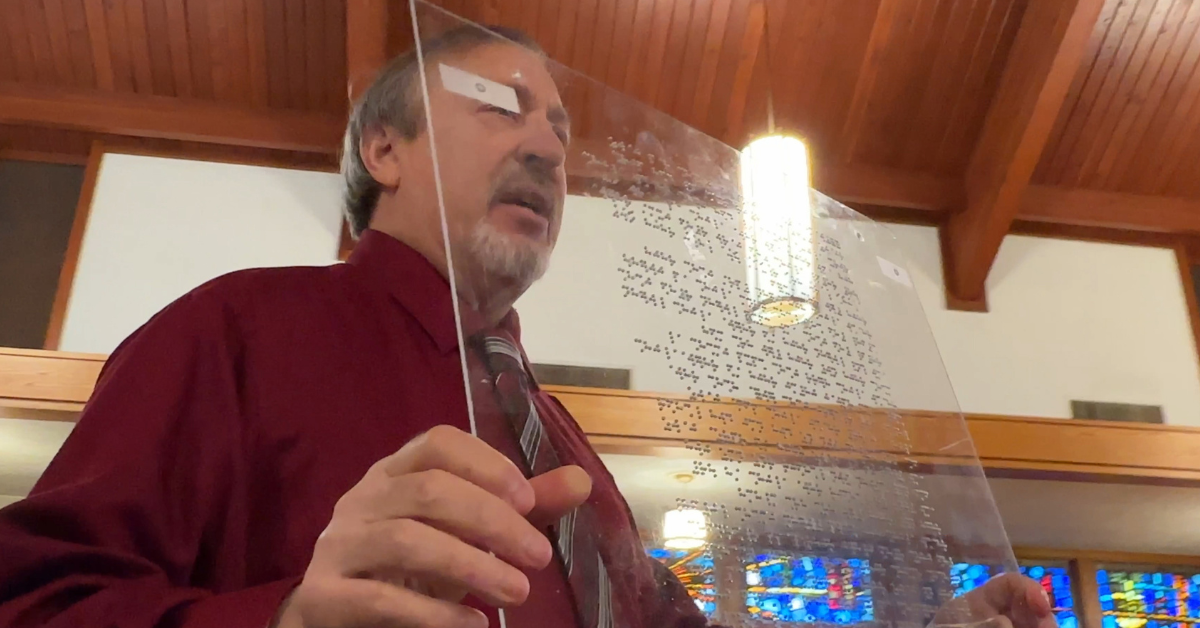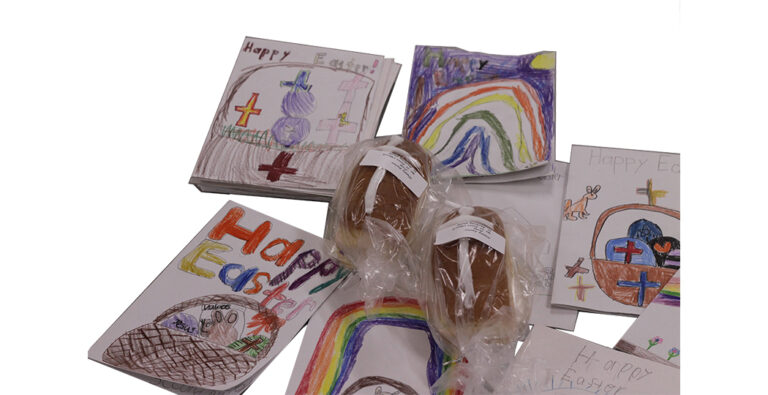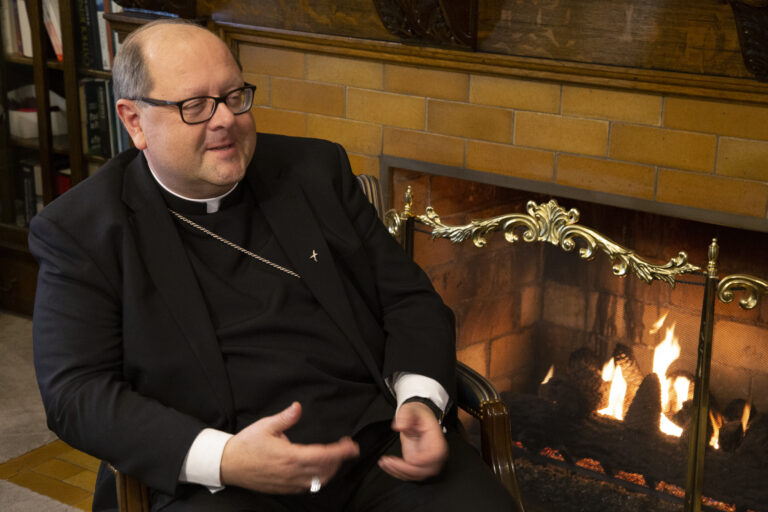
By Mary Seamans
Multimedia Journalist for The Catholic Accent
Imagine being a Jewish Rabbi, expected to read from the Sefer Torah at services, and you lose 80% of your vision in one eye, 20% in the other, with the possibility of becoming completely blind in the future. Rabbi Lenny Sarko of Congregation Emanu-El Israel in Greensburg found himself in this situation in 2015.
Rabbi Sarko shared his situation for parishioners at the Church of Saint Anne in Rostraver recently as part of a learning session.
For over 3,000 years, Jewish communities have been reading from a Torah scroll for congregational services on a weekly basis. The blind and visually impaired were not able to participate in this honor, since it is required that the scroll be read and not memorized. Although Hebrew Braille was invented in the 1940’s, no scroll had been created for a variety of reasons. Using his background in education and with incredible dedication, Rabbi Sarko has created the world’s first Hebrew Braille Sefer Torah.
The first five books of Hebrew Scripture are known as the Torah, and includes all the biblical laws of Judaism. The Hebrew words in the five books of Moses today are the same words that were written 3,000 years ago. Other written Hebrew scriptures are the Prophets (Nebiim) and the Wisdom Writings (Kethubim). All together, these books are known as the Old Testament to Christians.
Before the invention of the printing press in 1455, books were rare and expensive. A Jewish community would get together, everyone would donate money, and they could purchase a Torah Scroll. Then the community would gather a few times per week and they would read the Torah out loud. That way, everyone would be able to hear the laws and get the information on how to practice Judaism.
A Sefer Torah Scroll is a handwritten copy of the Hebrew text of the Torah. One of the requirements is that the scroll must be all organic. The end of the scroll must be made of wood. The paper must be parchment made from the skin of a kosher animal, and the ink must also be organic.
After suffering from bleeding in his eyes caused by diabetes in 2015, Rabbi Sarko became sight-impaired. Reading for a rabbi is very important, and he made a decision to learn Braille. While learning English Braille, he discovered that there was also Hebrew Braille. Since it is not taught in the United States, he obtained books and became self-taught in Hebrew Braille. Thinking that there had to be a Hebrew Braille Scroll somewhere, he did some research in the United States, Europe and Israel, and found that none had ever been made. But why not?
Rabbi Sarko sent out email questions around the world asking why or why not a Hebrew Braille Sefer Torah could be created. He got tons of responses about many issues he would have to deal with.
The first issue: The scroll had to be made of parchment and you couldn’t put a Braille dot on parchment. Rabbi Sarko obtained sheep, goat and other kosher parchments and tried to put Braille dots on them. And guess what? No problem.
Second issue: You roll a scroll back and forth when you read it. The dots are going to be squished, and you won’t be able to use it any more. So, he got himself a nonkosher scroll and put a bunch of dots on it, rolled and rerolled the scroll for five months, and found the dots were just fine. Parchment is both flexible and tough.
Third Issue: Hebrew Sefer Scrolls are traditionally not touched by hands, since oil and dirt from hands could begin to smudge the letters. They use a pointer, called a yad, to follow the words. The yad is moved above the letters, so that the writing will not be damaged over time. A typical scroll can last for hundreds of years if you take care of it. He believes the same is true with a Braille Scroll if you treat it carefully.
Some other Issues: Braille takes up a lot of space. If you try to put the five books of Moses on a scroll, it would be the size of a house and you wouldn’t be able to use it. A standard written scroll has 42 lines of text in each column of text. Each Braille cell, the six-dot pattern, is approximately ½ mm tall so that you can read all the dots simultaneously with the pad of your fingertip. Amazingly, he found that you can fit 42 lines of Braille on the parchment and you can also fit 40 letters on a line…exactly the same number of Hebrew written letters that fit in a column.
But there were some differences: Hebrew is read right to left, all Braille, regardless of the language, is written left to right. This doesn’t seem to be a problem. The columns of text are justified on both ends. They do that by stretching or condensing the last character of the line. You can’t do that in Braille. Again, this doesn’t seem to be a major problem. There are words in the Torah that are written extra-large or extra-small because this has important meaning. You cannot change the cell size of the Braille. Rabbi Sarko’s solution is based on the fact that there is no six-dot letter in Hebrew Braille. So, for an extra-small letter, he put one six-dot cell right before the letter. For an extra-large letter, he put two six-dot cells right before the letter. Problem solved.
The toughest Issue: The letters must be put on the scroll manually. A sacred Sefer Scroll cannot be done by a machine. In addition, there cannot be any mistakes. This issue took him almost five years to solve. The spacing of the dots and the size of the dots must be precise. Could that be done by hand? Not a chance. To write in Braille manually, you can use a slate and stylus. The slate consists of two pieces of plastic fastened together. The bottom plate has slight depressions spaced out in Braille cells, the correct depth of a Braille dot. The top plate has six holes for each Braille cell. The user, places a piece of paper between the two plates and pushes the stylus through the correct holes in each cell to form each letter. With more than 4,000 dots in each column of the scroll, it would be impossible to do this without making any mistakes.
Rabbi Sarko came up with the idea of making a slate, with only the holes needed for the letters
pre-drilled, and to make the slate the exact size of the column of text. This would involve a lot of steps.
First he needed to take the Torah text and put it into 40 character lines, organized upside down and backwards to read correctly when embossed on the scroll. This then needed to be converted into computer code for the machine to read, and sent to a company for manufacturing. The bad news was that he would need to make 239 different slate tops for a complete Braille scroll, about the same number of columns written on a traditional scroll. The good news was that it could be done.
Last Issue: There are about 400,000 blind or sight impaired Jews in the United States alone, and they are spread out. The cost to make any Sefer Scroll, traditional or Braille is about the same: $50,000-$100,000 to produce. Are people going to buy a Braille scroll for 2 people to read in their synagogue? Not likely.
Rabbi Sarko has formed a non-profit corporation, and is getting grants to make multiple scrolls. In Judaism, the same reading is standardized worldwide. So, if a congregation would like to borrow a scroll, he can send them a copy of the scroll a week in advance with instructions. They can return the scroll when they are finished. To help lower the cost of shipping and insurance, he has separated the Torah into five separate scrolls. He has also put together a course in Hebrew Braille, since that does not exist anywhere, that he can send that out to whoever requests it.
It took him six years to make the first set of Braille Torah Scrolls, but it only took him six months to make the second one. Theoretically, it takes 2 weeks to send out a scroll and get it returned. One set can be used 26 times a year. If this scroll can be used worldwide, how many scrolls does he need to make? Lots!
If you are interested in learning more about the Hebrew Braille Sefer Torah, or would like to make a donation to help with this project, visit Devarim.org
- Tags:
RELATED STORIES
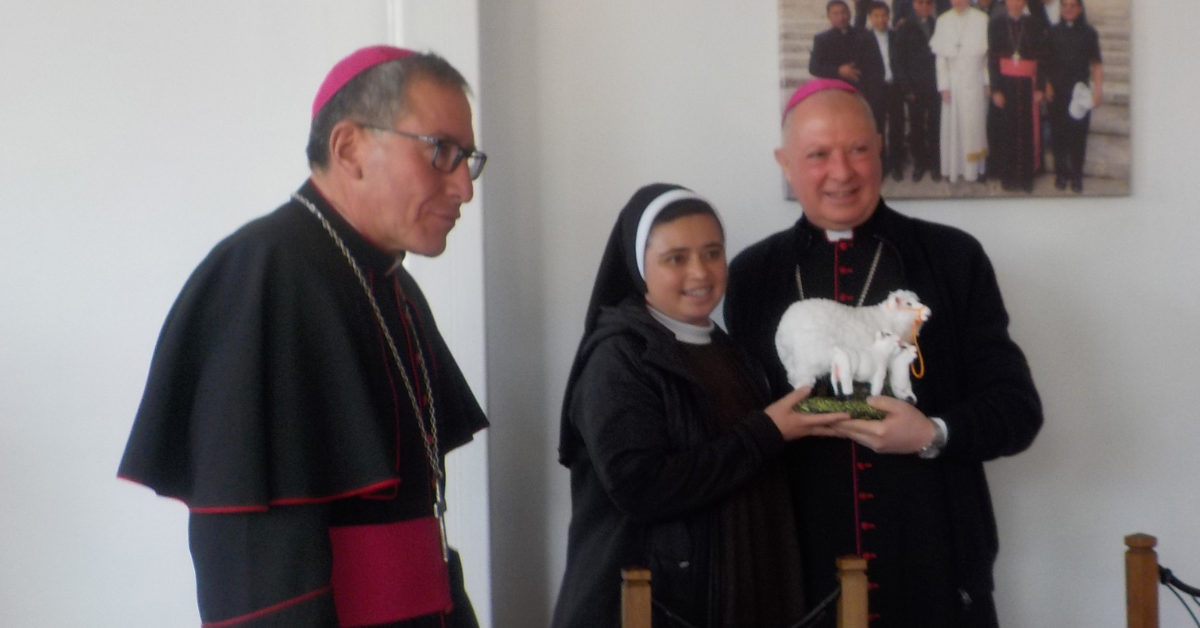
Apostolic Nuncio from the Vatican, Bishop Paolo Rocco Gualtieri, visits our sister Diocese of Sicuani
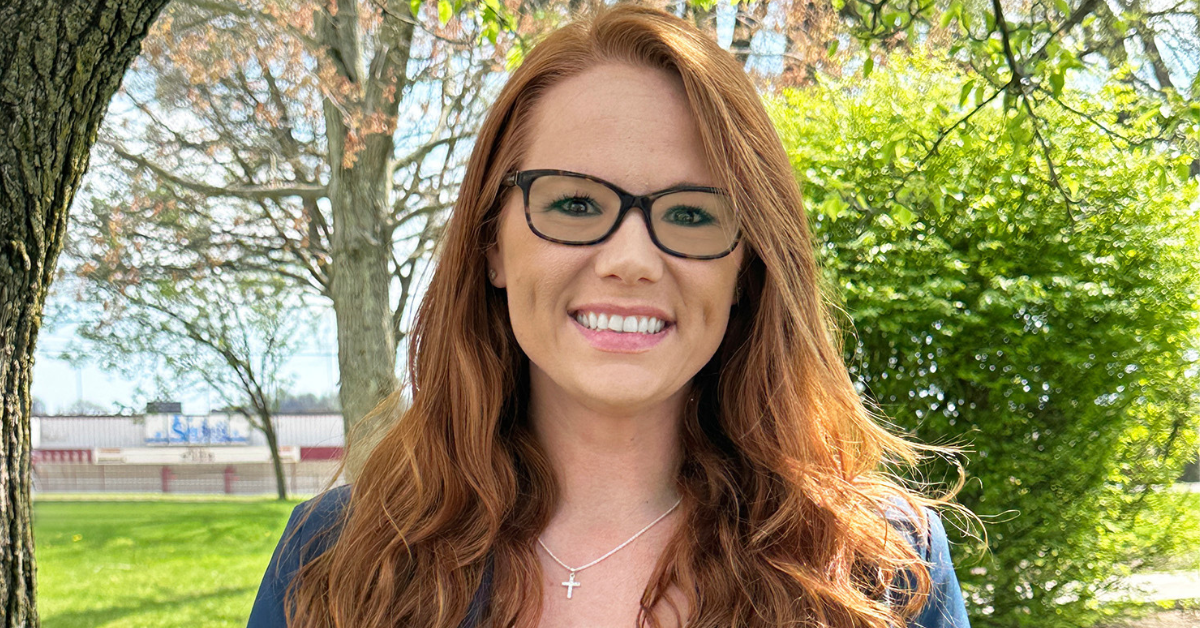
DeMarco announced as Assistant Principal at Greensburg Central Catholic Junior-Senior High School

Catholic Daughters of the Americas, Court St. Bernard Education Contest Awards
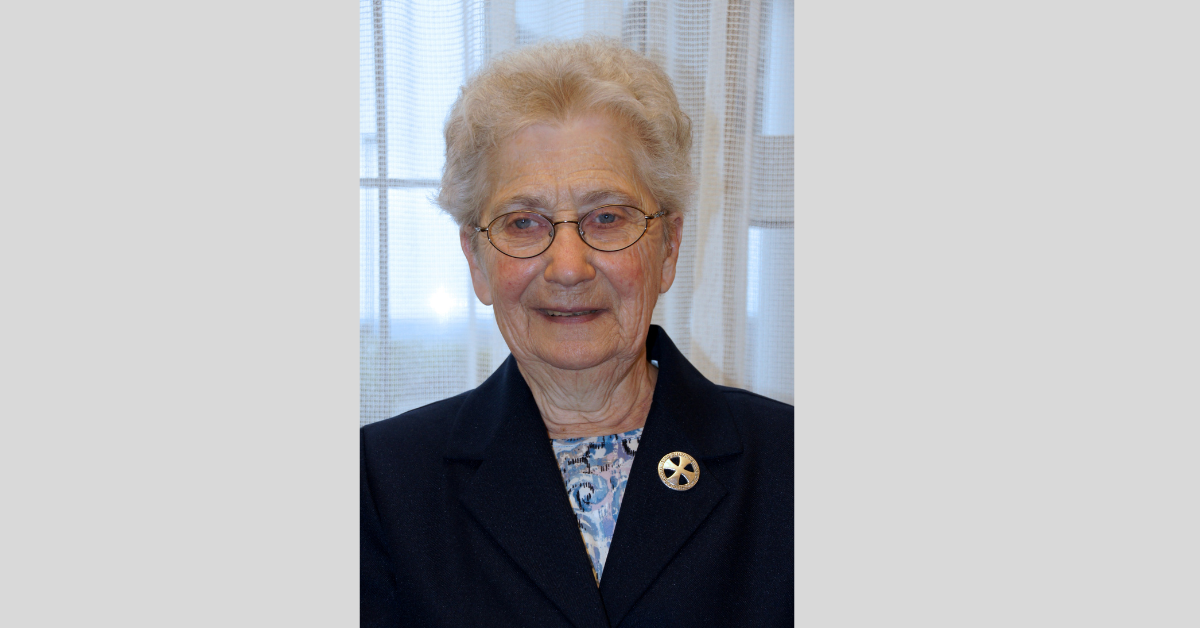
Sister Mary Jean Petrarca, SC, age 91, entered eternal life April 19, 2024 in her 72nd year of religious life

Cardinal: Vocation is call to happiness; right path is discerned in prayer

Catholics Participating in National Eucharistic Pilgrimage and the National Eucharistic Congress Have Opportunities to Receive Plenary Indulgences
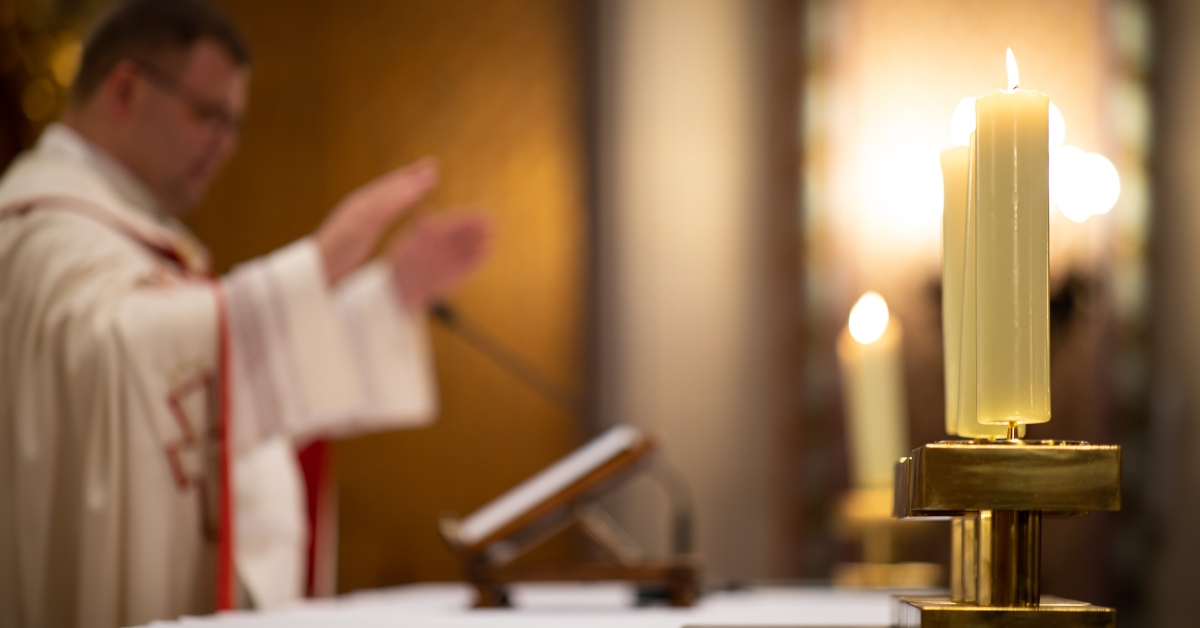
New Survey of Men Being Ordained to the Priesthood Underscores the Significant Influence of Parents on Children’s Vocational Discernment
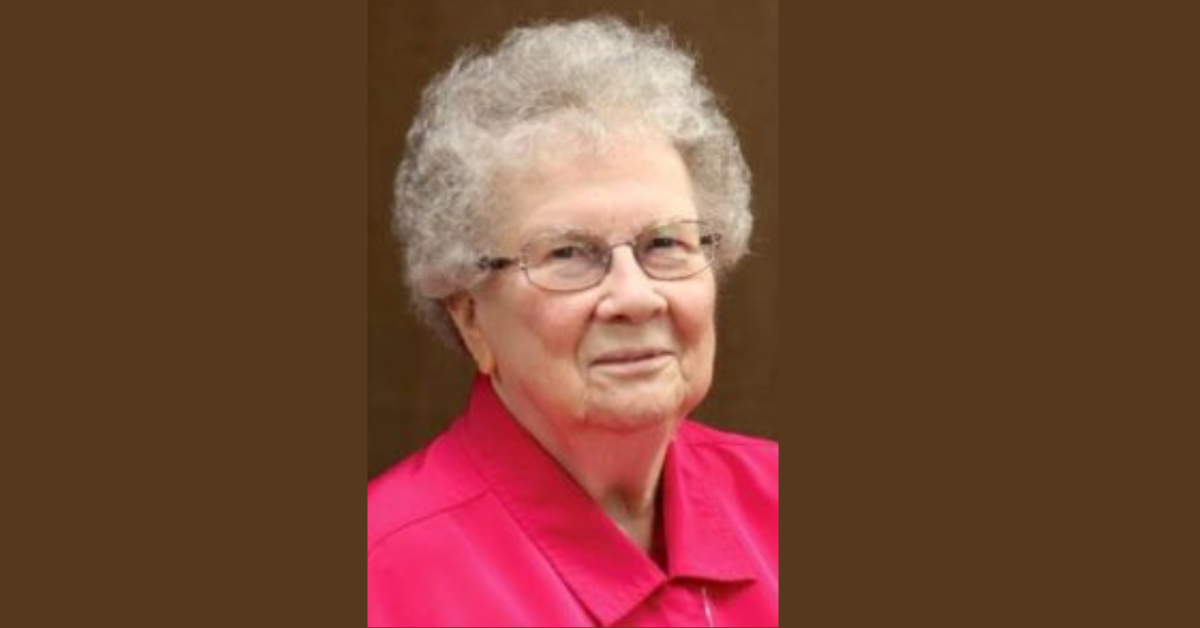
Sister Grace Snyder, a Sister of Saint Francis of the Neumann Communities – Millvale, after 76 years of religious life.

Diocese, Saint Vincent Seminary's IMF partner for formation program
